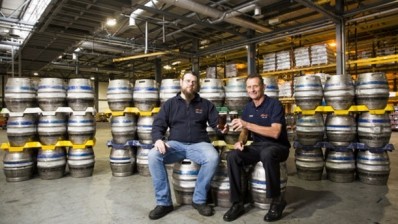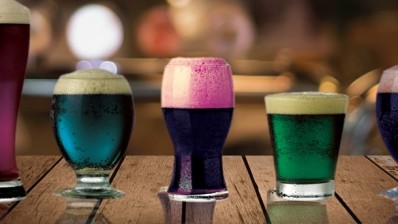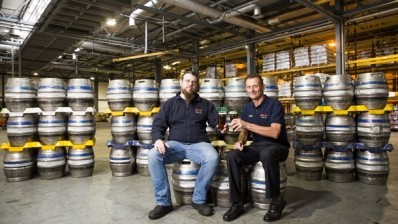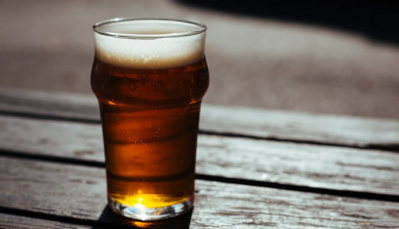Let's all drink beer in: Norwich
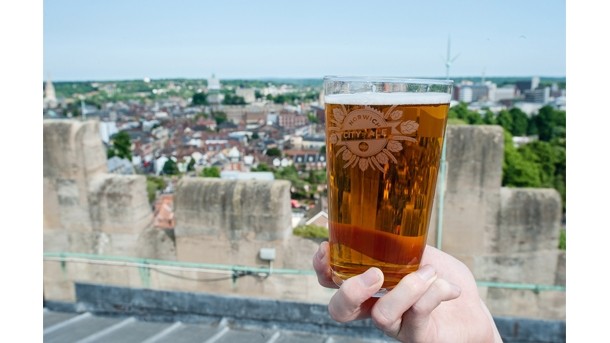
Once upon a time, Norwich offered its residents more than one pub for every day of the year and had the largest number of ale houses per square mile anywhere in the country.
Now you would be stretched to find a pub for every day of the year, but the bulk of those remaining are in better shape than ever, as more operators in the area continue to invest in their beer offering.
This is evident in the attention given by pubs to the annual City of Ale event, which is now in its seventh year and takes place every May. Some 43 pubs signed up to the festival this year, offering 234 beers from 36 brewers that were made available across seven different ale trails.
What is notable about the event is how much beer diversity there is among the region’s brewers – a fact that Cheryl Cade, local beer sommelier and founder of Thirst Consultants, believes has an affect on what consumers seek in Norwich pubs.
“Someone from out of town can walk into a Norwich pub and see an offering that looks and tastes completely different from anywhere else in the UK,” she claims.
“You can go just 10 miles out of Norwich and find a completely different offer to what you will find here. But, likewise, you could walk 10 minutes down the road from one pub to another in Norwich and find an offer that’s completely different to the one you were in.”
Mighty malts
One reason Norwich is a stand out for cask ale is down to its agricultural industry, Cade believes. The region is known for its hops, grain and malting industries, which means drinkers can quite easily see where everything in their beer comes from.
“We do grains better than anywhere else, it’s the high plains of Norfolk, and we have some fantastic malts and the brewers also want to use the local ingredients – we’re an agricultural area and it shows in our beer.”
This is a unique set-up, as City of Ale chair Roger Protz acknowledges. “We live in challenging times where beer is concerned, with both global and large national brewers dominating the market and restricting choice for drinkers,” he maintains.
“It’s never been more vital for beer lovers and campaigners to support the work of independent brewers who use the finest malts and hops to fashion their beers. Good beer is about what the French call provenance or terroir – the importance of place, climate, soil, sunshine and rain that all combine to produce the finest wine, cheese or beer.
“Norfolk is a hymn to terroir; the county that produces the finest malting barley, Maris Otter, in particular.”
James Hughes, owner and director of local Woodforde’s brewery, believes the local link really helps sell beer in the area, as well as further afield. “I think there’s a different generation of consumers, who want to know where the products they consume are coming from and believe locally sourced ingredients are a sign of quality.
“As a result, a lot of smaller breweries are coming to the fore with this message.”
The trend is akin to what started happening in food a few years ago, with more producers extolling their local credentials and more consumers calling out for a reduction in food and drink miles, he adds.
St Peter’s Brewery, which is situated just outside the city, is tapping into the local trend too, but managing director Steve Magnall also believes there are other areas the beer sector should look into with more effort, such as vegan and gluten-free.
“Lifestyle is a big focus for us and something we’ve been doing a lot of work on recently,” says Magnall.
“I cannot compete with the big breweries on something like an IPA, so we have to look at what we can do better than them.
“We’re always thinking about how we stand out in the marketplace and we do that by going in the opposite direction to everyone else, not by trying to get to where everyone else is going first. We launched our alcohol-free beer and have focused on gluten-free beer too.”
Domain of older men
Both brewery bosses can agree that the cask segment needs a new lease of life, in that the majority of consumers buying into the category are older and unwilling to spend enough within it.
This is something Ben Thompson, owner and licensee of the Plasterers Arms, understands. “The big problem with cask beer is it’s mostly the domain of older men and the control of it has been shifting towards men in their 50s. This also means there’s a constraint in what people will pay for cask, especially when younger drinkers are prepared to pay more for keg.
“Norwich’s beer scene isn’t entirely different or better than other places, but we do have a wider scope and there’s a big culture of ales, although not all of them are good.”
On the topic of keg, Thompson believes that, while Norwich is generally good at cask, the region is behind the curve when it comes to craft.
“Norwich is behind other places in terms of keg beer, despite the renaissance experienced across the rest of the country. That’s not to say I think keg is better than cask, because I prefer cask, but we’re not in the same place with our overall beer offer,” says Thompson.
“It just worries me that some really good breweries are moving away from cask and that’s not good. I think it’s down to the fact the younger consumers haven’t moved into the category like they have keg.”
Thompson stocks around 23 draught beers, nine on keg and the rest on cask. He pushes customers to try more by pricing the beers up as halves and not differentiating between cask or keg.
Another local publican with a large draught offering is Matthew Pamplin, who has run the free-of-tie Earlham Arms for the past five years with partner Kim Paillet. The pub has five lagers, three craft beers and 12 ales on draught.
According to Pamplin, cask is moving in the right direction when it comes to gaining younger drinkers and is competing with craft keg. “Everyone expects cask ales to catch up with the change in craft, so what the cask brewers have done is up their ABV and flavour content to mimic craft keg as much as possible,” he claims.
The question now is how much will change between now and next year’s City of Ale event? It would be interesting to see whether, as pointed out by some operators in the area, Norwich will catch up with the rest of the country with its craft keg offering.
That said, it is likely the region’s cask offer will remain strong as brewers and pubs make a big play of locality.
